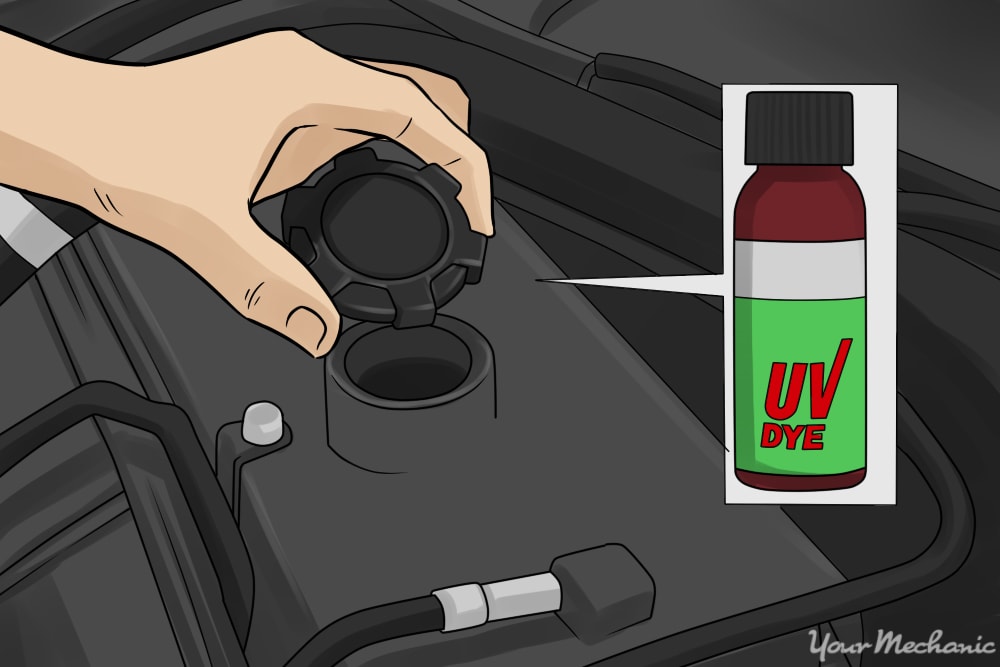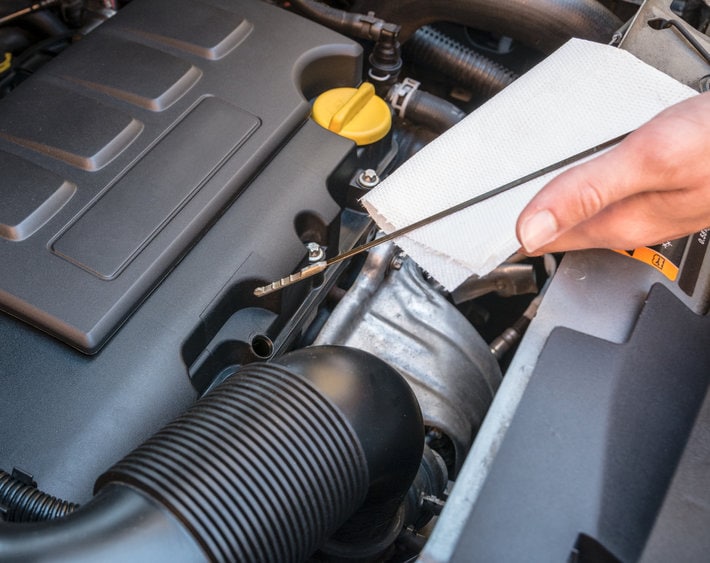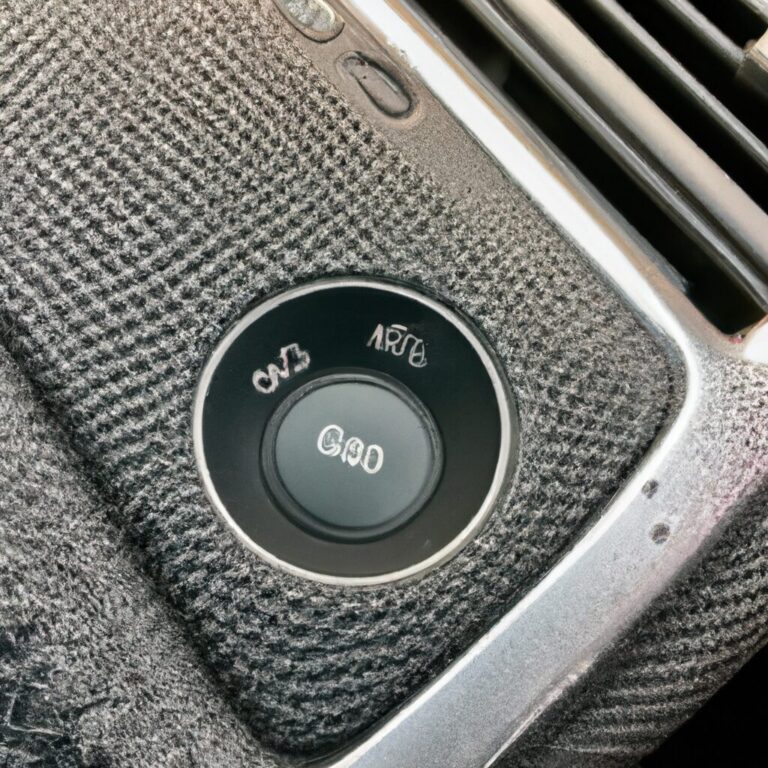How to Find Oil Leaks
To find oil leaks, inspect under the vehicle for visible oil stains or puddles. Use a UV dye kit for tracing leaks easily.
Oil leaks can be a common issue in vehicles, causing environmental pollution and engine damage if left unaddressed. By promptly identifying and fixing leaks, you can prevent costly repairs and ensure optimal vehicle performance. Understanding the signs and methods for locating oil leaks is essential for maintaining your vehicle’s health and longevity.
Whether you notice oil spots in your parking space or detect a burning oil smell, taking quick action to locate and repair leaks can save you time, money, and potential engine breakdowns. Let’s delve into practical ways to effectively find and fix oil leaks in your vehicle.

Credit: www.yourmechanic.com
Identifying Common Signs Of Oil Leaks
Identifying common signs of oil leaks is crucial for maintaining the health and performance of your vehicle. By recognizing these signs early on, you can address the issue promptly and prevent potential damage to your engine. Here are the common signs to look out for:
Visible Oil Stains On The Ground
One of the most obvious signs of an oil leak is the presence of visible oil stains underneath your car. These stains are typically dark brown or black and can be found where your vehicle is parked or after driving. It’s important to locate the source of the leak to identify the severity and take the necessary steps to fix it.
Burning Smell
If you notice a persistent burning odor while driving, it could indicate an oil leak. The smell is often caused by oil dripping onto hot engine components and burning . This can also be accompanied by smoke coming from under the hood, which should be addressed immediately to prevent potential fire hazards.
Low Oil Levels
Regular checking of your vehicle’s oil levels is crucial, as sudden decreases could signal a leak. A low oil level can negatively impact your engine’s lubrication, leading to excessive wear and potential damage. If you consistently notice a drop in oil levels between oil changes, it’s important to investigate for possible leaks.
Engine Overheating
An oil leak can result in inadequate lubrication of engine parts, leading to increased friction and heat. If you observe your engine overheating more than usual, it could indicate oil leaking onto hot surfaces. Addressing this issue promptly can prevent costly damage to your engine.
Unusual Engine Sounds
Leaking oil can cause certain engine parts to operate without proper lubrication, leading to unusual sounds such as knocking or clunking. If you hear any abnormal noises while driving, it’s important to have your vehicle inspected to identify any oil leaks and prevent further damage.

Credit: www.firestonecompleteautocare.com
Locating The Source Of The Oil Leak
Inspecting The Valve Cover Gasket
Check for signs of oil residue near the valve cover. Inspect the gasket for cracks or gaps.
Checking The Oil Pan And Drain Plug
Look under the car for oil drips or puddles near the oil pan. Tighten the drain plug if loose.
Examining The Oil Filter
Inspect the oil filter for any leaks or damages. Make sure the filter is securely attached.
Inspecting The Oil Cooler Lines
Check the oil cooler lines for any visible leaks or seepage. Ensure connections are tight.
Checking The Rear Main Seal
Look for oil seepage at the rear of the engine. If the seal is damaged, it may need replacement.
Fixing Simple Oil Leaks At Home
Learn how to easily find and fix oil leaks at home to ensure your car’s performance and avoid expensive repairs. With simple steps and basic tools, you can detect and repair oil leaks yourself, saving time and money.
Replacing The Valve Cover Gasket
Begin by safely securing the vehicle on a level surface.
Locate the valve cover and carefully remove the bolts using a wrench.
Gently pry off the old gasket and clean the surface before installing a new one.
Tightening Loose Oil Pan Bolts
Locate the oil pan beneath the engine.
Using a socket wrench, tighten the loose bolts in a crisscross pattern.
Replacing Damaged Oil Filter
Find the oil filter and unscrew it using an oil filter wrench.
Replace it with a new filter, ensuring it’s securely fitted.
Repairing Or Replacing Worn-out Oil Cooler Lines
Inspect the oil cooler lines for signs of wear or damage.
Repair minor leaks with a suitable sealant or replace the lines entirely.
Replacing A Faulty Rear Main Seal
Identify the rear main seal located at the back of the engine.
Carefully remove the old seal and install a new one in its place.
By following these simple steps, you can effectively fix common oil leaks at home without the need for professional help.
Seeking Professional Help For Complex Oil Leaks
When it comes to dealing with complex oil leaks in your vehicle, seeking professional help is crucial to ensure the problem is identified and resolved effectively. Professional mechanics have the skills and expertise to pinpoint the exact source of the leak and provide the necessary repairs. Here are some steps to consider when seeking professional help for complex oil leaks:
Taking Your Vehicle To An Auto Repair Shop
If you notice a complex oil leak in your vehicle, it’s essential to take it to a reputable auto repair shop that specializes in addressing oil leaks. An experienced mechanic will be able to perform a thorough inspection of your vehicle to identify the source of the leak.
Hiring A Certified Mechanic
When seeking professional help for complex oil leaks, ensure that you hire a certified mechanic with the expertise in handling oil leak issues. A certified mechanic has the necessary training and knowledge to diagnose and fix complex oil leaks with precision.
Getting A Comprehensive Diagnostic Test
A comprehensive diagnostic test is essential when dealing with complex oil leaks. The mechanic will use advanced diagnostic tools to identify the specific area where the leak is originating from, enabling them to recommend the most suitable course of action.
Considering The Cost Of Repairs
Before proceeding with the repairs, it’s important to discuss the cost of the required repairs with the mechanic. Understanding the potential expenses involved will help you make an informed decision regarding the necessary course of action to address the oil leaks.
Following Manufacturer’s Maintenance Schedule
Adhering to the manufacturer’s recommended maintenance schedule for your vehicle is essential in preventing complex oil leaks. Regular maintenance and oil changes can help identify and address potential issues before they escalate into more significant problems.
Preventing Future Oil Leaks
Preventing oil leaks is crucial for maintaining the performance and longevity of your vehicle’s engine. Regular maintenance and following good practices can significantly reduce the chances of oil leaks occurring. In this section, we will discuss some important steps you can take to prevent future oil leaks.
Regularly Checking And Changing Engine Oil
Regularly checking and changing the engine oil is essential for preventing oil leaks. Over time, engine oil can become contaminated or break down, losing its effectiveness in lubricating and protecting the engine components. To avoid leaks, follow the manufacturer’s recommendations for oil change intervals. This will help keep the oil in optimal condition and reduce the likelihood of leaks.
Using High-quality Engine Oil And Filters
The quality of the engine oil and filters you use plays a significant role in preventing oil leaks. High-quality engine oil with the correct viscosity rating can provide better lubrication and minimize wear on engine components, reducing the risk of leaks. Additionally, using high-quality oil filters helps trap dirt and contaminants, preventing them from causing damage that could lead to leaks.
Inspecting Gaskets And Seals
Gaskets and seals play a crucial role in maintaining a tight seal between engine components. Over time, these gaskets and seals can degrade, leading to oil leaks. Regularly inspecting and replacing worn or damaged gaskets and seals is vital for preventing leaks. Pay close attention to areas such as the valve cover gasket, oil pan gasket, and other seals throughout the engine.
Maintaining Proper Oil Levels
Keeping the engine oil at the recommended level is essential for preventing leaks. Too much oil can cause excess pressure in the engine, which can lead to leaks. On the other hand, if the oil level is too low, certain engine parts may not receive adequate lubrication, increasing the risk of leaks. Regularly check the oil level using the dipstick and add oil as needed, following the manufacturer’s guidelines.
Avoiding Over-tightening Oil Filters And Drain Plugs
When changing the oil, it’s important to avoid over-tightening the oil filter and drain plug. Over-tightening can damage the gaskets or threads, leading to leaks. Follow the manufacturer’s recommendations for torque specifications when installing these components. It’s also a good idea to use a torque wrench to ensure proper tightening.
By following these preventive measures, you can significantly reduce the chances of experiencing oil leaks in your vehicle. Regular maintenance, using high-quality products, and inspecting critical components will help keep your engine running smoothly and free of leaks.

Credit: m.youtube.com
Frequently Asked Questions Of How To Find Oil Leaks
How Can I Find Where My Oil Is Leaking From?
To find where your oil is leaking from, first, check underneath your car for any drips or puddles. Also, inspect the oil pan, valve cover, and oil filter for signs of leakage. Use a flashlight if needed for a closer look.
If you cannot locate the leak, seek professional assistance.
Where Are The 3 Most Common Places For An Oil Leak To Be Found?
Common places for an oil leak are oil pan gasket, valve cover gasket, and front crankshaft seal.
How Do You Investigate An Oil Leak?
To investigate an oil leak, inspect the engine for visible oil pooling or dripping. Check hoses, gaskets, and seals for cracks or damage. Utilize a dye or UV light to trace leaks to their source. Consider seeking assistance from a professional mechanic for a thorough diagnosis.
Where Do Most Oil Leaks Come From?
Most oil leaks come from worn gaskets, seals, or a damaged oil pan. These components can deteriorate over time and cause oil to seep out. Regular maintenance and inspections can help prevent leaks.
How Can I Identify An Oil Leak?
To identify an oil leak, check for puddles or drips under your vehicle and look for a strong odor of burning oil.
What Are The Common Causes Of Oil Leaks?
Common causes of oil leaks include worn seals or gaskets, loose or damaged oil filters, and improper installation of oil drain plugs.
Are Oil Leaks Dangerous For My Car?
Yes, oil leaks can be dangerous for your car as they can lead to engine damage, reduced lubrication, and overheating if not addressed promptly.
Conclusion
Locating oil leaks is crucial for maintaining vehicle performance. By following the steps outlined in this guide, you can effectively identify and address any leaks in your vehicle’s oil system. Regular inspection and immediate repair will help prevent engine damage and ensure your vehicle’s longevity.
Keep an eye out for any signs of leaks and take action promptly to keep your car running smoothly.

